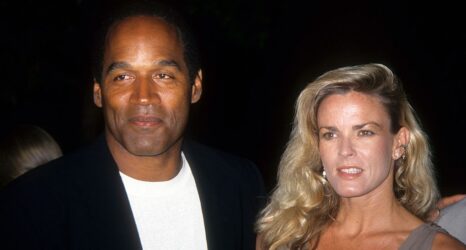Last week, leaders of the Cannes Film Festival signed a pledge to improve gender parity at film festivals. The pledge, drafted by the French organization 50x50x2020, includes commitments to increasing the number of women-directed films chosen for festivals and greater transparency in selection processes—such as revealing the identity of members of the selection and programming committees, including information about gender breakdowns of film crews in the application process and a movement toward gender parity on executive boards.
50x50x2020 also organized the red-carpet protest in which 82 women, led by this year’s jury president Cate Blanchett and French director Agnes Varda, stood together on the stairs. Joining Blanchett and Varda in silent protest were many other stars, including Jane Fonda, Kristen Stewart, Marion Cotillard, Salma Hayak and filmmakers Ava DuVernay and Kim Longinotto.
I cheated 🤷🏻♀️ I am having 82 woman crushes this week. #WCW Shouting out the eighty-two women that climbed the steps of the Palais des Festivals at #Cannes2018 to protest for gender equality in the film industry. @Festival_Cannes pic.twitter.com/Lkqd0hLWyT
— Michelle Monaghan (@realmonaghan) May 16, 2018
“82 women, representing the number of female directors who have climbed these stairs since the first edition of the Cannes Film Festival in 1946,” said Blanchett, reading from a statement. “In the same period, 1,688 male directors have climbed these very stairs. In the 71 years of this world-renowned festival, there have been only 12 female heads of its juries. The prestigious Palme d’Or has been bestowed upon 71 male directors, but only two female directors, Jane Campion, who is here in spirit, and the wonderful Agnes Varda who is here today. These facts are stark and undeniable.”
The signing ceremony brought together feminists and an international cadre of pro-equality movements representing Time’s Up (both in the U.S. and the UK), Dissenso Comune in Italy, IMA in Spain and Women’s Wave in Greece. Female members of this year’s jury including Blanchett, Kristen Stewart, Léa Seydoux and Ava DuVernay attended. France’s culture minister, Françoise Nyssen, and the national film board president, Frédérique Bredin, also took part.
The fact that the first signing happened at Cannes, one of the most well-known film festivals in the world, and arguably the one with the most work to do in terms of gender parity, is an important first step and represents true progress. And it should be celebrated. But we really do have so far to go.
Although some film festivals, notably Sundance, where I serve as chair of the board, have been actively working on inclusion for years, getting to 50×50 is harder to achieve than it may seem. In 2012, The Sundance Institute and Women in Film launched the Female Filmmakers Initiative to foster gender parity behind the camera. They commissioned research with Dr. Stacy Smith and her team at USC’s Annenberg School for Communications to analyze the gender composition among content creators in the independent film space. This kind of research had never been undertaken before.
In the first and second phases, Stacy and her team looked at the barriers and opportunities for women in independent film getting into festivals and focused on films included in the previous decade—2002 to 2012—at the Sundance Film Festival. In the third phase, they looked at what happened in the careers of female filmmakers whose films were featured at Sundance in terms of distribution deals, exhibition patterns, opportunities to direct and funding for new projects.
Stacy and her team found a broken pipeline in the independent film world for female filmmakers, particularly for women in the narrative space. From 2002 to 2012, roughly 17 percent of U.S. narrative directors, versus 35 percent in docs, and 30 percent of U.S. narrative producers, versus 46 percent in docs, were women. Additionally, working in a male-dominated industry meant women must also navigate gendered financial barriers and exclusionary hiring practices in Hollywood. Of the top 100 grossing films from 2002 to 2012, only 4.4 percent of all directors were women.
4.4 percent!
Their report notes that “clearly, females—particularly directors—face a steep fiscal cliff as they move from independent to studio-based fare.” You can watch more of what Stacy and her team found in their research by watching her TEDWomen talk on the data behind Hollywood’s sexism.
In order to include more films made by women in festivals, we need more films made by women! Gender stereotypes and financial barriers still exist for women filmmakers—even those who have successful first films. When Stacy and her team asked industry experts to name attributes of a successful narrative director, they named twice as many traditionally associated male attributes as female ones. This tendency to “think director, think male” is a real problem.
But even if you don’t work in the film and television industry, there is something very powerful you can do. Part of the process of repairing the pipeline for women in film, in all areas—producing, behind and in front of the camera — is on us.
Miss Representation, a wonderful organization led by filmmaker, actor, activist and advocate Jen Siebel Newsom, is working to empower women into leadership positions in media and to fundamentally change the representation of women behind and in front of the camera, protesting negative stereotypes often perpetuated by the roles and stories that do make it all our screens from theaters to television to phones. “You can’t be what you can’t see,” underlies their entire mission. And part of their campaign is encouraging women, who represent 85 percent of consumers, to consume better and more consciously.
As she noted in her 2011 TEDWomenX talk, we need to vote with our dollar and we need to vote with our media choices. This summer, Miss Representation is asking people to go see a movie written, directed or produced by a woman. “Let’s change the narrative,” they tweeted. “Cannes is just the beginning.” Women and Hollywood is helping you get involved with a weekly blog post name-checking films about women opening each week and an uber-list of women-centric films coming in 2018 in theaters, on streaming services and cable that you should bookmark right now.
As you can see, there are a lot of projects on the list. That’s progress, too. Some of the films I’m looking forward to watching in theaters and on screens this month include Book Club, a new film starring four women actors—Candice Bergen, Jane Fonda, Diane Keaton and Mary Steenbergen—who have been on the frontlines challenging stereotypes and creating new opportunities for women in film for decades; RBG, a documentary about the incredible career of U.S. Supreme Court Justice Ruth Bader Ginsburg by filmmakers Betsy West and Julie Cohen; and The Tale by Jennifer Fox, both breakout films at Sundance earlier this year.
Choose to pay for and watch films that align with your values—and check the credits for names of the many talented women prepared to take on all of the positions behind and in front of the camera, from leading actor to director to producer to every other position. The very least we can demand is for something closer to the true representation of women consumers of media. That change begins with you and me.
Originally published on Pat Mitchell’s blog. Republished with author permission.





